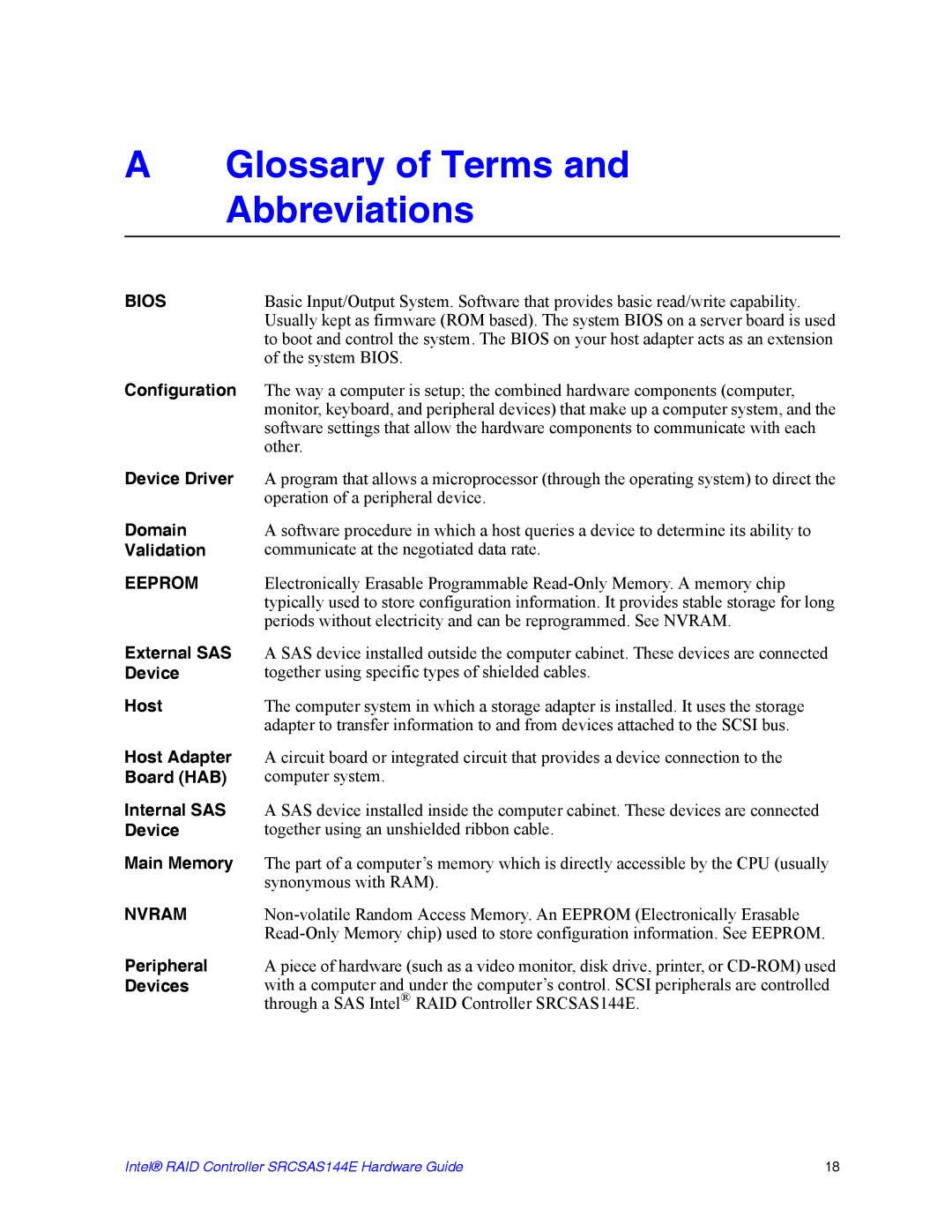AGlossary of Terms and Abbreviations
BIOS | Basic Input/Output System. Software that provides basic read/write capability. |
| Usually kept as firmware (ROM based). The system BIOS on a server board is used |
| to boot and control the system. The BIOS on your host adapter acts as an extension |
| of the system BIOS. |
Configuration | The way a computer is setup; the combined hardware components (computer, |
| monitor, keyboard, and peripheral devices) that make up a computer system, and the |
| software settings that allow the hardware components to communicate with each |
| other. |
Device Driver | A program that allows a microprocessor (through the operating system) to direct the |
| operation of a peripheral device. |
Domain | A software procedure in which a host queries a device to determine its ability to |
Validation | communicate at the negotiated data rate. |
EEPROM | Electronically Erasable Programmable |
| typically used to store configuration information. It provides stable storage for long |
| periods without electricity and can be reprogrammed. See NVRAM. |
External SAS | A SAS device installed outside the computer cabinet. These devices are connected |
Device | together using specific types of shielded cables. |
Host | The computer system in which a storage adapter is installed. It uses the storage |
| adapter to transfer information to and from devices attached to the SCSI bus. |
Host Adapter | A circuit board or integrated circuit that provides a device connection to the |
Board (HAB) | computer system. |
Internal SAS | A SAS device installed inside the computer cabinet. These devices are connected |
Device | together using an unshielded ribbon cable. |
Main Memory | The part of a computer’s memory which is directly accessible by the CPU (usually |
| synonymous with RAM). |
NVRAM | |
| |
Peripheral | A piece of hardware (such as a video monitor, disk drive, printer, or |
Devices | with a computer and under the computer’s control. SCSI peripherals are controlled |
| through a SAS Intel® RAID Controller SRCSAS144E. |
Intel® RAID Controller SRCSAS144E Hardware Guide | 18 |
